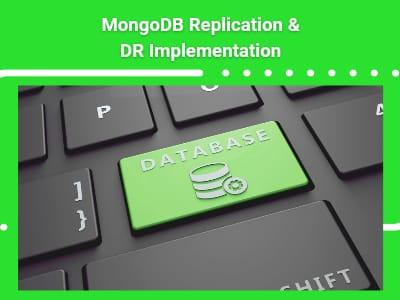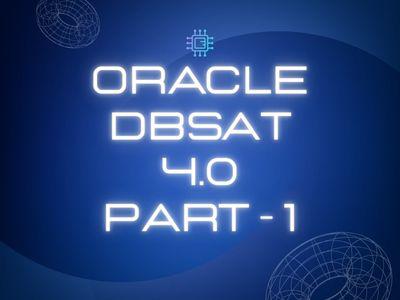- November 18, 2024
by Gauri Wahab - Sr. Sales & Marketing Officer
- Introduction
- Client Overview: Challenges & Requirements
- Project Scope: Key Phases: Initialization, Disaster Recovery Setup & Monitoring and Optimization
- Challenges & Solutions
- Results
- Conclusion
MongoDB, a powerful NoSQL database, offers high performance and flexibility, making it an ideal choice for organizations that require resilient data replication and disaster recovery across multiple regions. The implementation plan was designed keeping client’s requirements, team & resource availability, and project timeline.

Introduction:
This case study examines how Data Patrol Technologies implemented a MongoDB replication and disaster recovery solution for a client in the financial sector. The project ensured seamless data resilience, high availability, and rapid failover processes, all critical to maintaining uninterrupted operations across a geographically diverse infrastructure.
The primary objectives of this project were to maintain high MongoDB availability, minimize data loss, and implement a robust disaster recovery mechanism. Specific targets included handling minimal downtime (under 20 minutes), efficient replication across multiple regions, and securing data integrity during failovers.
Client Overview:
The client operates within the financial technology industry and sought to enhance its database infrastructure due to rapid growth and increasing demands for data availability. Managing high-volume data distributed across multiple regions introduced several challenges related to data consistency, minimal downtime, and continuity during potential outages.
-
Challenges: With multi-region operations, the client’s existing MongoDB infrastructure faced difficulties in data synchronization and system downtimes during peak usage. With data volumes nearing 200GB, ensuring consistent and resilient replication across geographically dispersed servers became essential.
-
Requirements: The client required a solution that ensured downtime remained below 20 minutes, provided real-time data replication, and included robust disaster recovery strategies to safeguard business continuity.
Project Scope: High-Level Plan
The project was structured to span several weeks and included phases for initializing replica sets, configuring MongoDB for replication and DR, and finally, continuous monitoring and optimization. The major activities and milestones achieved were categorized into three key phases:
- Initialization.
- Disaster Recovery Setup
- Monitoring and Optimization
Key Phases:
Initialization (Week 1):
The initial setup focused on establishing MongoDB replica sets across various regions.
-
Network Connectivity: Secure network connectivity was established between primary and secondary servers. Network communication was configured to enable seamless data flow across different geographic locations.
-
Replica Sets Configuration: MongoDB instances were configured to form replica sets, and data synchronization across clusters was initiated. Primary and secondary clusters were established to ensure real-time replication, enhancing high availability.
Disaster Recovery Setup (Week 2):
This phase involved configuring a backup MongoDB environment to guarantee disaster recovery readiness.
-
Secondary Cluster Creation: A secondary cluster was established in a remote data centre to act as the DR environment. This setup was configured to mirror the primary cluster’s data changes in real-time.
-
Continuous Replication: Continuous replication was implemented from the primary to the secondary clusters, ensuring that every transaction in the primary cluster was immediately reflected in the DR environment, thereby preserving data integrity.
-
Arbiter Nodes: Arbiter nodes were introduced in a third location to facilitate automatic failover in case of outages. These nodes do not store data but participate in the replication quorum, ensuring that a new primary node could be elected quickly if the original primary failed.
Monitoring and Optimization (Week 3):
Continuous monitoring tools were deployed to track replication performance, identify bottlenecks, and conduct optimization efforts.
-
Performance Monitoring: Monitoring tools were set up to observe key metrics, such as replication lag, data throughput, and overall system health. Multiple failover tests were conducted to verify that the replication setup could handle various failure scenarios.
-
Parameter Fine-Tuning: MongoDB parameters were fine-tuned to enhance performance, including adjustments to write concern and read preferences. Comprehensive testing ensured optimal readiness for production deployment.
Election with Arbiter Nodes:
To manage potential outages effectively, arbiter nodes were introduced to ensure quorum, particularly when a data-bearing node or an entire data center failed. During the setup, various failure scenarios were tested:
-
Single Node Failure: The simulation of a single data-bearing node failure confirmed that the arbiter could facilitate a new primary node election without any data loss.
-
Data Center Failure: The simulation of a full data center failure validated that the DR setup could continue operating without compromising data availability, supported by the arbiter nodes.
Challenges and Solutions:
-
Downtime Management: Given the client’s strict requirement for minimal downtime, careful scheduling and incremental implementation ensured that downtime remained under 20 minutes. During the setup, backup measures and rollback options were prepared, allowing for seamless transitions.
-
Data Synchronization: Synchronizing 200GB of data across multiple regions proved complex. An initial data sync was completed, followed by continuous monitoring of replication lag to ensure data accuracy and minimize latency between primary and secondary clusters.
-
Replication Performance: Configuring MongoDB settings for optimal multi-region performance was crucial. Adjustments to settings, such as write concern and heartbeat frequency, minimized replication lag and facilitated faster failovers.
Results:
-
Resilience: The setup ensured high data resilience by replicating data across multiple regions, establishing fault tolerance, and reducing vulnerability to regional outages.
-
Seamless Failover: The comprehensive disaster recovery configuration, including arbiter nodes, facilitated immediate primary node elections, ensuring continuity without any data loss.
-
Production Readiness: After rigorous testing and optimizations, the MongoDB infrastructure was deemed production-ready, meeting all performance and availability requirements. Failover tests confirmed the robustness of the DR setup, allowing for uninterrupted service during any disruptions.
Conclusion:
Through the implementation of this MongoDB replication and disaster recovery setup, the client achieved high availability, enhanced data resilience, and a significant reduction in potential downtime. By implementing a detailed disaster recovery plan and optimizing MongoDB for multi-region performance, the client is now well-prepared for operational growth.
This robust MongoDB infrastructure supports seamless failover and enables the client to maintain superior data integrity across its operations, reinforcing their capacity to handle future challenges in a high-demand financial environment.
The success of this project has established us as a preferred vendor for this company, regularly entrusted with their most challenging projects.
For more details connect with Data Patrol Technologies at info@datapatroltech.com or call us on


